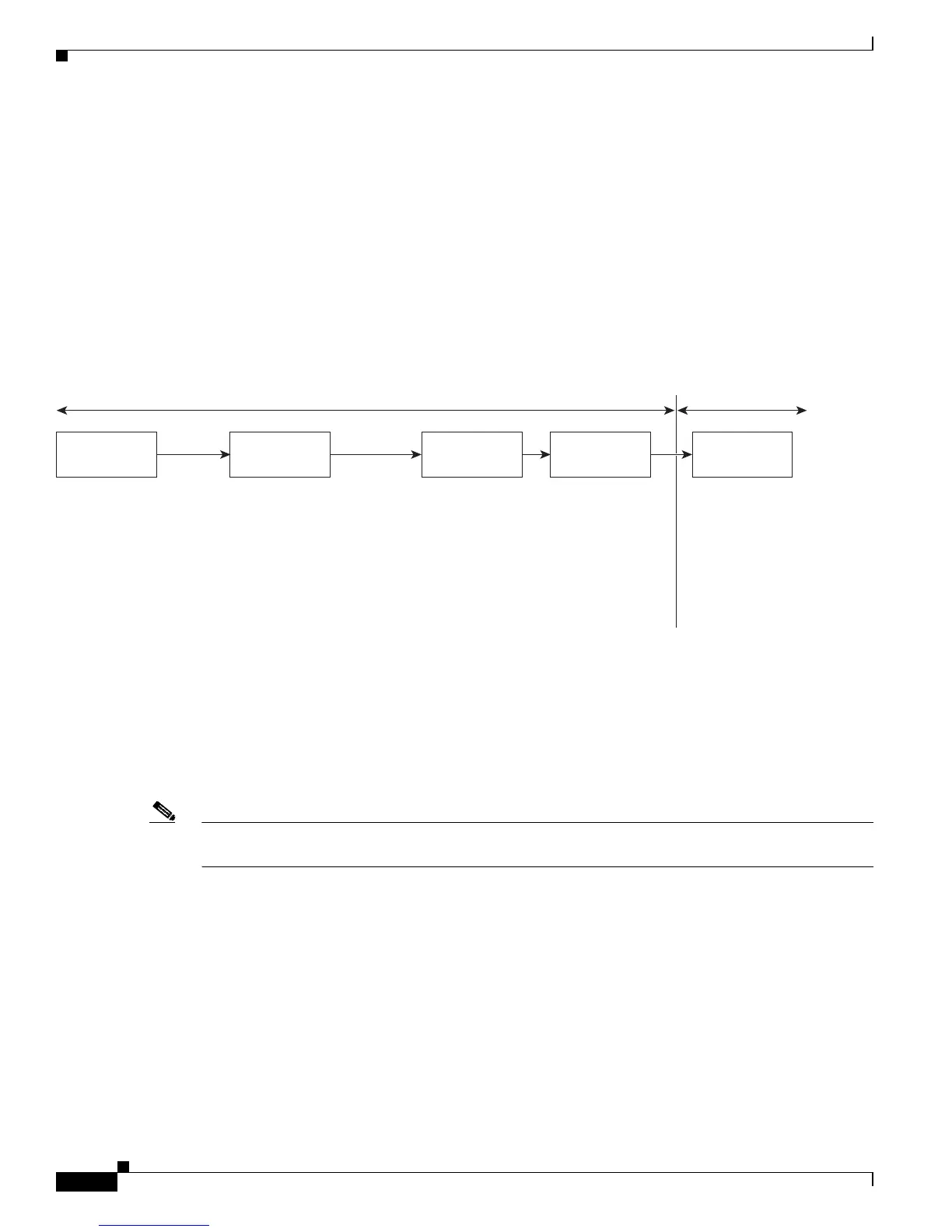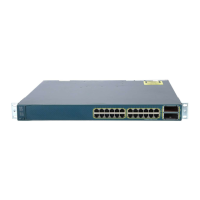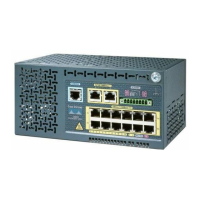32-4
Catalyst 3750 Switch Software Configuration Guide
78-16180-02
Chapter 32 Configuring QoS
Understanding QoS
Actions at the egress port include queueing and scheduling:
• Queueing evaluates the QoS label and the corresponding DSCP or CoS value to select into which of
the four egress queues to place a packet. Because congestion can occur when multiple ingress ports
simultaneously send data to an egress port, WTD is used to differentiate traffic classes and to subject
the packets to different thresholds based on the QoS label. If the threshold is exceeded, the packet
is dropped. For more information, see the “Queueing and Scheduling Overview” section on
page 32-11.
• Scheduling services the four egress queues based on their configured SRR shared or shaped weights.
One of the queues (queue 1) can be the expedite queue, which is serviced until empty before the
other queues are serviced.
Figure 32-2 Basic QoS Model
Classification
Classification is the process of distinguishing one kind of traffic from another by examining the fields
in the packet. Classification is enabled only if QoS is globally enabled on the switch. By default, QoS is
globally disabled, so no classification occurs.
Note Classification occurs only on a physical port basis. No support exists for classifying packets at the
VLAN or the switch virtual interface level.
During classification, the switch performs a lookup and assigns a QoS label to the packet. The QoS label
identifies all QoS actions to be performed on the packet and from which queue the packet is sent.
The QoS label is based on the DSCP or the CoS value in the packet and decides the queueing and
scheduling actions to perform on the packet. The label is mapped according to the trust setting and the
packet type as shown in Figure 32-3 on page 32-6.
86682
Classification Policing
Generate
QoS label
Actions at ingress Actions at egress
Mark
In profile or
out of profile
Inspect packet
and determine
the QoS label
based on ACLs
or the
configuration.
Compare the
incoming traffic
rate with the
configured policer
and determine if
the packet is in
profile or out of
profile.
Based on whether
the packet is in or
out of profile and
the configured
parameters,
determine whether
to pass through,
mark down, or
drop the packet.
Queueing and
scheduling
Based on the QoS
label, determine
into which of the
egress queues to
place the packet.
Then service the
queues according
to the configured
weights.
Based on the QoS
label, determine
into which of the
ingress queues to
place the packet.
Then service the
queues according
to the configured
weights.
Queueing and
scheduling
